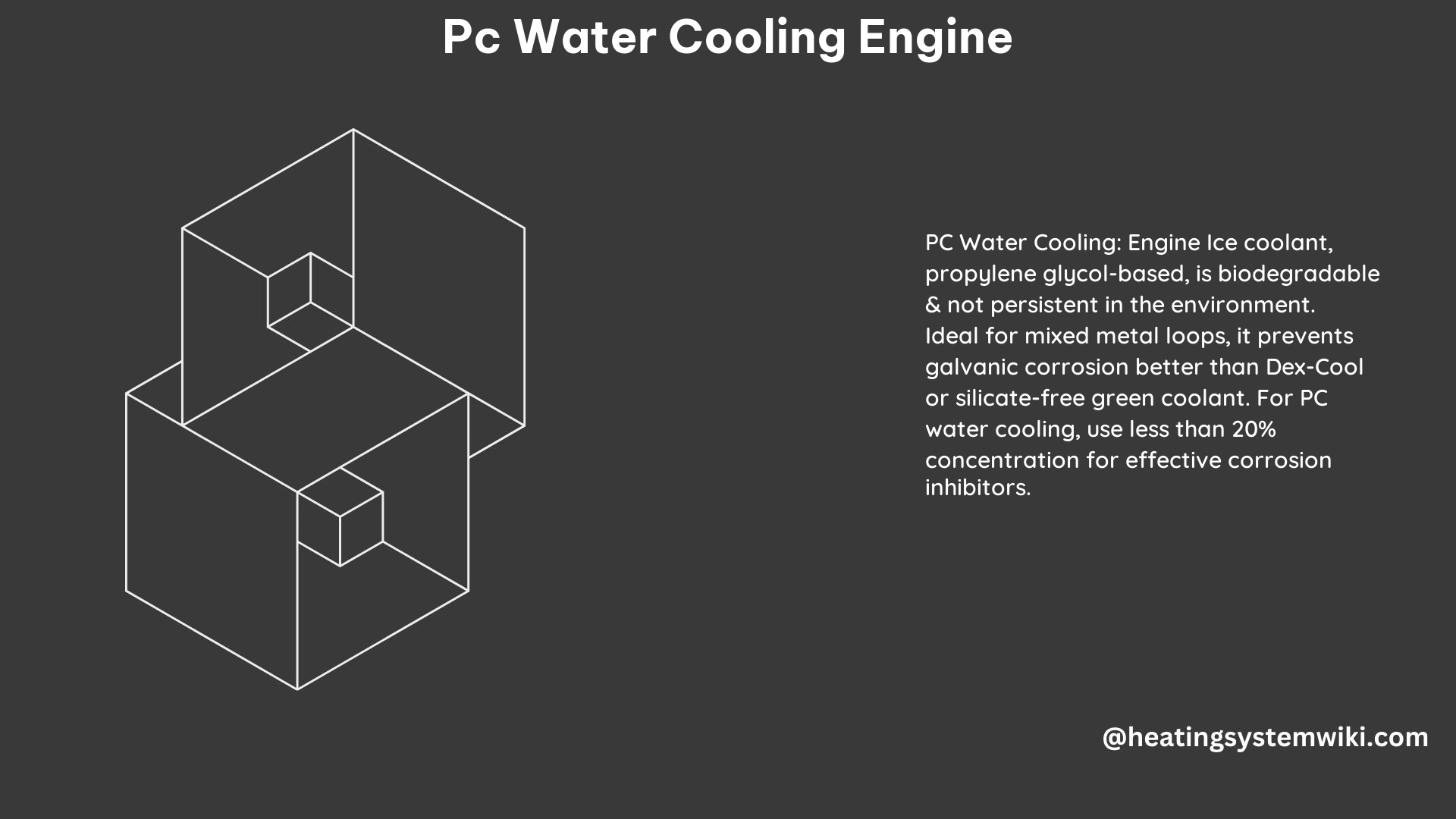A PC water cooling engine is a highly efficient and quiet cooling solution for high-performance or overclocked computers. It uses the principle of thermodynamics to transfer heat from components to water and then to the radiator, making it a superior alternative to traditional air-cooling systems.
Understanding the PC Water Cooling Engine
A PC water cooling engine includes the following key components:
- Pumps: These are responsible for circulating the coolant (usually a mixture of water and antifreeze) through the system.
- Radiators: These dissipate the heat absorbed by the coolant, allowing it to be cooled before it returns to the components.
- Reservoirs: These hold the coolant and allow for expansion as the system heats up.
- Tubing: This connects the various components, allowing the coolant to flow through the system.
The system functions similarly to a car’s cooling system, where water is circulated through the engine or components to absorb heat. This makes water cooling especially useful for high-performance or overclocked computers where heat generation exceeds the capabilities of standard air-cooling systems.
Advantages of PC Water Cooling

- Improved Cooling Efficiency: Water cooling is 2-3 times more efficient than air cooling, allowing for better heat dissipation and higher overclocking potential.
- Reduced Noise: Water cooling systems are generally quieter than air-cooled systems, as the fans required are typically smaller and run at lower speeds.
- Customization: Custom loop water cooling systems offer a high degree of customization, allowing users to tailor the system to their specific needs and preferences.
Types of PC Water Cooling Systems
There are two main types of water cooling systems:
- All-in-One (AIO) Systems:
- Pre-assembled and sealed, making them easy to install but less customizable.
-
AIO systems have a lifespan of around 3-5 years.
-
Custom Loop Systems:
- Allow for more customization and performance but require more knowledge and maintenance.
- Custom loop systems can last up to 10 years with proper maintenance.
Coolant Selection and Maintenance
When it comes to the coolant, it is fine to use car coolant for PC water cooling, but you do not need the concentrations that are necessary for a car. Stick to less than 20% concentration to still have effective corrosion inhibitors. This is because car antifreeze has additives to lower its freezing point and raise its boiling point, which are not necessary for a PC water cooling system.
To ensure optimal performance and longevity, it is essential to maintain the PC water cooling system properly. This includes:
- Regularly checking the coolant level and topping it up if necessary.
- Flushing the system and replacing the coolant every 12-24 months.
- Inspecting the tubing, fittings, and other components for any signs of wear or leaks.
Technical Specifications and Considerations
- Cooling Efficiency:
- Water cooling is 2-3 times more efficient than air cooling.
-
The radiator size and fan speed can significantly affect the cooling performance.
-
Coolant Temperature:
-
The coolant temperature should be kept below 60°C to prevent damage to components.
-
Flow Rate:
-
The flow rate of the water pump should be at least 1 liter per minute for efficient cooling.
-
Lifespan:
- AIO water cooling systems have a lifespan of around 3-5 years.
- Custom loop systems can last up to 10 years with proper maintenance.
Conclusion
A PC water cooling engine is a highly efficient and quiet cooling solution for high-performance or overclocked computers. By understanding the key components, advantages, and technical specifications of this system, you can make an informed decision and ensure optimal cooling performance for your PC.
